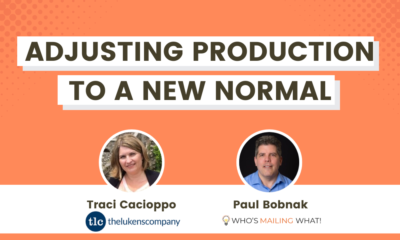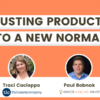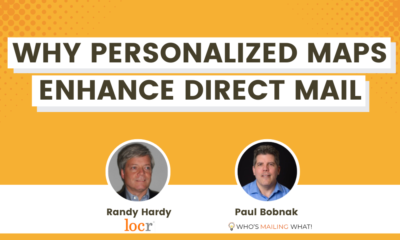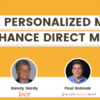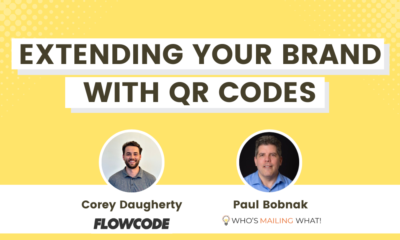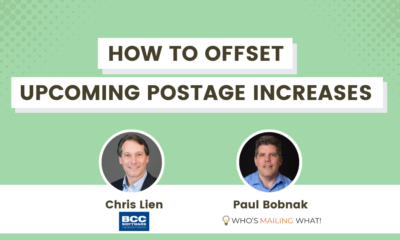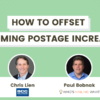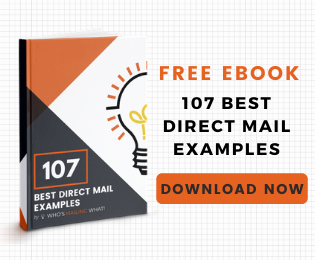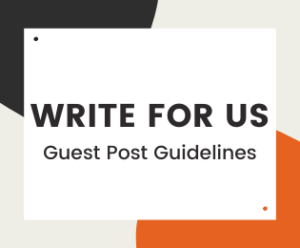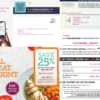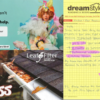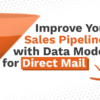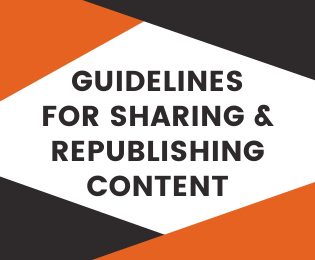MEET THE MAILERS
Meet the Mailers: Direct Mail in the Customer Journey
In this episode, we talked with PFL about how different-sized companies deal with challenges, healthcare mail best practices, direct mail trends.
In this episode, I talked with Jennifer Bellin, Chief Marketing Officer for PFL, an end-to-end direct mail technology company.
I was happy to have the opportunity to connect with her and chatted at length about the company’s direct mail work.
We discussed how PFL uses direct mail to engage a company along the customer journey.
As she explained:
Best practice programs actually use low-cost direct mailers at the top of the funnel. You certainly want them to be high-impact, but when you’re really just introducing your brand… it’s nice to have a lower-cost option.
 Jennifer BellinChief Marketing Officer
Jennifer BellinChief Marketing Officer
PFL
Among the many topics we covered at length:
- Her background in marketing
- How different-sized companies deal with challenges
- Best practices for healthcare mail marketing
- Why direct mail works
- Industry trends for the years ahead, such as sustainability
Here are some questions and answers (edited for clarity and space):
- Well, you’ve been working with companies of different sizes with PFL. Does that mean that they all face different challenges?
Yes, for sure. I think the size of the company and especially the size of the marketing team can impact direct mail program execution.
So there are probably four or five different ways that I see this. One is through creative. Smaller companies and teams often lack creative resources, so they lean much more heavily on the PFL customer success team to help with ideation and even design work. But on the flip side, larger companies often have.
Lots and lots of approval processes, you know, so it takes longer to get things over to us to get things approved. They often have more regulations and policies they have to adhere to, such as government compliance, and that can hold things up. So, it really is different just depending on the size of the company from a creative standpoint, for sure.
Data challenges also, clean and reliable mailing address data can be a challenge for both small and large companies, but I think smaller companies often struggle even more because they’re just not as established a lot of times. Maybe they don’t have as clean of a database, or they just simply haven’t acquired or accumulated a lot of mailing addresses yet.
So they lean on PFL’s data team to help with mailing addresses, and they also often partner with vendors who can enrich their data. Like maybe they have some of the information but not quite all of the information needed. You always want more data. You always want your data to be fresh, and it’s hard to keep it that way.
- How can companies use direct mail to engage customers at different points along the customer journey?
Well, as all marketers know, there definitely is a series of stages that makes up that customer life cycle, and we think about that all the time. You have the awareness stage, the consideration, the conversion stage, new customer, customer retention, and advocacy. And we think about each of these with our customers and our prospects on how we can best target.
And direct mail can be really impactful throughout each of these stages. So I’ll just share three examples. First, let’s think about awareness. So, a great first impression of your brand is essential if you’re in the awareness stage.
And so, best practice programs actually use low-cost direct mailers at the top of the funnel. You certainly want them to be high-impact, but when you’re really just introducing your brand, and you’re not sure if they’re going to engage or not, it’s nice to have a lower-cost option. One customer that we work with, Eleanor Health, uses PFL to send thousands of personalized letters and brochures every week to introduce their services to new potential patients.
And they use our integration with Salesforce Marketing Cloud to send a combination of coordinated digital and direct mail touches together with their CRM data to personalize and trigger it just the right moment. And they’ve actually seen an increase of 3X on the leads that they’re generating from their campaigns. And also, of course, by automating, they’re saving a ton of time.
A second stage that we could talk about is the consideration stage. At this stage, prospects are aware of the brand, right? But they have some pain that you might be able to address.
This is when you educate. More about the pain and how you can help, you start to increase your personalization, and you keep engagement high as possible. An example here is Paycor. They do this really well. They have an email nurture program for prospects who’ve watched a demo online, or they’ve attended a demo, but they haven’t progressed further in the funnel.
So in order to boost that engagement with this digital nurture that they had been running for a long time, Paycor decided to add a mailer into the mix. And this mailer has a printed buyer’s guide literally talking to you about how to make an HR technology software purchase. And then, they have a personalized note that can come directly from the sales rep with the sales rep’s picture and their contact information.
And then they have a fun item, a Branded Tile, which is one of these cool techy gadgets that you can use to track something that you might not wanna lose. You gotta attach it to your phone, your keys, or something like that. And so they’ve packaged that all together, and then they send that within this cadence. And they have found that adding direct mail has increased their win rates, and they’re seeing a 15X ROI on this program.
The last stage I’ll talk about, the last example here, is around customer retention. Many of our users leverage direct mail for customer retention, and some of the use cases are acknowledging personal or professional milestones. This might be sending something, maybe someone just had a baby, or maybe they’re a customer at your bank, and they just paid off their loan, and you wanna celebrate with them.
And then, also having loyalty rewards programs. Like maybe sending something as a thank you for referring new business or maybe for a customer that’s making multiple purchases. Driving usage and continued engagement with the brand is another approach of one of our customer-driven brands, which includes Take 5 Oil and Meineke.
They have a great example of this, for their past customers who are unresponsive to email, they actually send out a postcard to encourage them to return for their next oil change. And they use data and their CRM to make personalized offers based on the past purchases and services.
And they actually send out an average of 3000 customer reminder postcards every single day. And they’ve seen like a 5% response rate, which is really well above an average response rate. So just some fun examples there. But yeah, there are countless ways to nurture with direct mail throughout the entire lifecycle.
- Well, how can marketers use different types of mailers to make their campaigns stand out?
I’ll just share a few examples of flat mailers and three mailers. One of my favorites is the popcorn mailer. So this is a trifold mailer that includes a single-serve bag of microwave popcorn in the mailer.
And it’s often used by our customers to encourage people to register for a webinar or maybe to make sure they attend the webinar, send a little reminder to thank you, and enjoy a snack while you send the webinar. Sometimes people use it to accompany a long-form piece of content like they might put a QR code.
There on the mailer and say, enjoy a snack and read this white paper, right? And you can actually, send it on demand from our solution. You can send one at a time or 10 at a time, however you want to do it. And you can customize each one. You could literally type a different message for each trifold mailer addressing pain points. So it’s a really fun thing for our sales reps especially. They love this popcorn mailer.
And speaking of QR codes, that is certainly a nice way to stand out, you know, QR codes, for a while, tried to be cool, but it was years really before QR codes really got their day.
And I think it was probably in the last few years, where people are using them all the time now. And especially for direct mail measurement. You can send somebody a QR code, and then you can immediately measure whether they go to that personal QR code or not, and you can feed that information right back into your Salesforce application or Marketo and know if they’re engaging…
But I think the last thing I would call out is certainly it is hard to resist a 3D box, even if it’s just somewhat dimensional. You know, a small dimensional little box that comes to your doorstep or comes to your office with some insightful content and maybe a logoed item. So that’s the other way I think you certainly can stand out if you are interested in spending a little more.
- About one of the markets that PFL serves, like healthcare marketing, what are some good practices for this vertical including, of course, direct mail?
Well, healthcare providers, like doctors offices and hospitals use direct mail in a lot of different ways. In fact, I was just recently at a conference talking with a lot of healthcare provider marketers, and they love direct mail.
And so some of the ways that they’re using direct mail would be for patient acquisition and retention, of course, sending out those appointment reminder postcards. And again, you can integrate all of that with your technology. You can say, “send email”, now “send follow-up postcard”, or you could say, “patient doesn’t prefer email, always send via mail.”
There are all sorts of things you can do with your technology to set that up. Patient onboarding and communication. So sending all the paperwork in advance, especially for who are less savvy, but really any of us. We just don’t wanna have to fill out the paperwork while we’re speaking.
And then also physician engagement recruitment and retention. You know, you probably are hearing it in the news all the time. It can be really difficult to staff these hospitals right now. Having educational webinars or networking events and mixers can be really powerful.
And so direct mail, either for the invitations or even for the follow-up after the event can be really powerful. So, I would say thinking about providers like doctor’s offices, those would be some use cases. But then there’s so many types of healthcare, different healthcare companies.
So payers would be another, right? The Blue Crosses of the world, they also have a big need for direct mail. And some of the things that they would do, they would send mailers for new members to understand their coverage. They might send mailers assisting members to find in-network providers and services.
There’s also a big incentive for health plans to encourage patients to adhere to whatever their, you know, their diagnosis and their treatment plan is. So they might be sending mailers about diabetes and the diabetes program that they should be complying to or about their medications and other treatments.
So there’s a lot of use cases for direct mail for health plans. And I’ll just give one example: Blue Cross Blue Shield of Michigan is one of our customers. And they actually use PFL to send out federal and state compliance communications to members who don’t have an email address. I mean, they might have an email address, but the health plan may not have the email address for them.
They’re required to send out these compliance messages, and it has to be within a very specific period of time. And so, in order to send those and track them, they use PFL to send out a very personalized message that pertains to their specific plan and regulations. They feed all that data back into their Salesforce Marketing Cloud instance, so they have a record.
That it was sent because that’s required by law. And they have to submit audits, you know, all the time to show that they have done that. And so with that program, they’ve actually reduced the time spent on these mailers by 70%. And they’ve reduced errors dramatically too by using their data versus having someone type it in. They’re just pulling [it] out of their CRM.
- So we’re already well into the year. What trends do you see unfolding in direct mail, like right now and going beyond into the rest of the year?
Yeah, so one of the things we’re seeing is that marketers are seeking sustainable products. We want to work with companies who have sustainable processes and procedures. At PFL, we have a printing facility that is wind-powered, and we partner with a company called PrintReleaf, and every tree that’s consumed by the production of Paper and corrugated products at PFL, a new tree is planted in a global area in need of reforestation.
So that’s definitely the first probably leading trend that we’re seeing. But I would say another is that companies are wanting to send from other organizations that give back in some way.
For instance, we offer coffee from an organization called Grounds and Hounds, and they’re focused, as you can imagine, on improving animal welfare.
And then, also we talked about it earlier, but triggered sending along the entire customer life cycle is definitely a trend we are seeing, especially as marketers become more sophisticated. They are seeing the need to and the value of sending direct mail throughout the lifecycle, but also automating it, triggering it, so it goes at just the right moment with just the right message using their data in their CRM.
And then lastly, one that I think is super cool, I’ve been a proponent of for a long time is incorporating video into your direct mail. So there are video cards that we can send where you actually have a video that plays when you open the brochure, it’s actually embedded into the brochure. And these are becoming more and more popular, and I think I’ve received one maybe in the past six or seven years, but they’ve been around a while, and so, I believe that they’re still novel enough that you’re not gonna throw it out if you get a brochure that’s playing a video with sound.
And so, it also works really well too if you have partners or resellers that you want to position your product because you can put a little product demo in that brochure, mail it out to all of your vendor partners, and then they can just use that video, just open it up and show it to a prospective customer and share your pitch.
So there’s just a lot of really interesting use cases; and video, if done right, it’s just an authentic and effective way to tell a story.
Here is our conversation (with all questions and answers). We’ve added timecodes for your convenience.
Thanks so much, Jennifer, for sharing your perspective and your expertise! To learn more about PFL, visit their website at www.PFL.com.
Your comments and ideas are very important to us in making your Who’s Mailing What! experience even better for you. Through these engaging talks, we hope you’ll take away practical tips, insights, and personal stories to inspire and build your own success.
If you have any feedback — or are interested in sharing your expertise and viewpoint with our wide and diverse audience on “Meet the Mailers” — please reach out to me. I’d love to hear from you!









